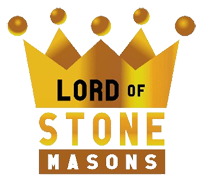What Is Sandstone Made Of? Understanding Sandstone Composition, Minerals, and Formation
Sandstone is a natural stone that’s widely admired and frequently used in both construction and landscaping. But behind its beauty and strength lies an interesting geological story. So, what is sandstone made of? What gives it its rich colors, rough textures, and enduring strength?
In this blog, we’ll explore what sandstone is made of, the minerals in sandstone, and how sandstone is formed in nature. Whether you’re a builder, landscaper, architect, or curious homeowner, understanding sandstone composition will help you make informed decisions for your next project.
🧱 What Is Sandstone?
Sandstone is a sedimentary rock that forms when sand-sized mineral grains and organic matter become compacted and cemented over millions of years. Its gritty texture and layered look are a result of natural geological processes that shape the stone over time.
But to get to the core—what is in sandstone? Let’s break it down.
🔬 What Is in Sandstone? (Sandstone Composition)
Typical sandstone composition includes:
- Quartz
- The most dominant mineral in sandstone.
- Makes up 50% to 90% of most sandstone samples.
- Extremely hard and resistant to weathering, making it a top choice for strong building materials.
- Feldspar
- The second most common mineral in sandstone.
- Adds color variations like pinks, reds, creams, and yellows.
- Slightly less durable than quartz but still essential to the rock’s visual appeal.
- Rock Fragments & Accessory Minerals
- These may include mica, zircon, magnetite, and clay minerals.
- Contribute to the stone’s texture, color variations, and weight.
In summary, sandstone minerals are primarily quartz and feldspar, held together by natural binders like silica, calcium carbonate, or iron oxide.
🌍 How Is Sandstone Formed?
Understanding how sandstone is formed helps explain its unique structure and appearance. The formation process includes:
- Erosion & Transportation
Wind, rivers, or oceans wear down existing rocks, producing sand-sized particles—mainly quartz and feldspar.
- Deposition
These particles settle in riverbeds, beaches, deserts, or basins, forming layered deposits over time.
- Compaction & Cementation
Over millions of years, the weight of accumulated layers compresses the sediments. Natural minerals like silica or calcite cement the grains together to create solid sandstone.
The location of deposition (desert, river, sea) influences sandstone’s color, hardness, and mineral content. That’s why natural sandstone from one region can look quite different from sandstone sourced elsewhere.
🎨 Sandstone Colors and Textures
The sandstone minerals and cementing agents influence its final appearance:
- Red/Brown sandstone: Contains iron oxide.
- Yellow/Cream sandstone: Typically quartz-rich and cemented with calcite.
- Grey/Greenish sandstone: May contain glauconite or chlorite minerals.
These natural tones make sandstone a popular choice for flooring, wall cladding, paving, and landscaping features.
🧠 Why It’s Important to Know What Sandstone Is Made Of
If you’re selecting materials for a project, knowing what sandstone is made of gives you a strategic edge:
- Durability: Higher quartz content = greater weather resistance.
- Porosity: Some sandstone types absorb more water—important for outdoor applications.
- Color longevity: Different minerals affect how sandstone weathers and ages over time.
🏗️ Sandstone Applications Based on Composition
Depending on its composition and porosity, natural sandstone can be used in:
- Load-bearing structures & paving: High-quartz sandstone for strength and durability.
- Decorative features: Textured or colored sandstone for facades, cladding, and landscaping.
- Sandstone for landscaping: Lightweight and porous variants for garden paths, feature walls, and flower beds.
Whether you’re designing a modern home or revamping a backyard, sandstone’s natural variety makes it easy to match your style.
✅ Summary: What Sandstone Is Made Of
Let’s recap the essentials:
- What is in sandstone? Mainly quartz and feldspar, with some accessory minerals and organic particles.
- What sandstone is made of: Sand-sized grains bonded by natural cements like silica or calcite.
- How is sandstone formed? Over millions of years through erosion, deposition, compaction, and cementation.
- Sandstone minerals: Quartz, feldspar, mica, clay minerals, and rock fragments.
Knowing the composition and formation of sandstone will help you choose the right kind—whether it’s for building, decorating, or landscaping with sandstone.
📞 Need Help Choosing the Right Sandstone?
Choosing the right sandstone starts with understanding what it’s made of. If you’re planning a patio, wall, or landscape feature, our team can help you find the best type of natural sandstone for your needs. Contact us today for expert advice and custom sandstone solutions.
